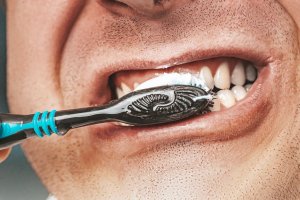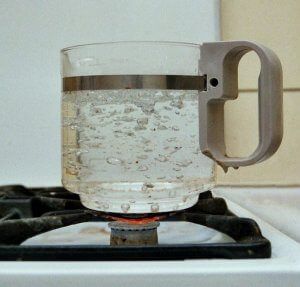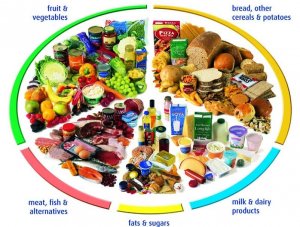Hi Everyone!! This article will share Health and Hygiene Questions & Answers.
In one of my previous posts, I have shared questions and answers of Growing Plants so, you can check that post as well.
Health and Hygiene Questions & Answers
Question 1: Fill in the blanks:
(a) A balanced diet includes carbohydrates, proteins, fats, vitamins and minerals in proper amount.
(b) Many diseases occur due to lack of physical activity.
(c) Microorganisms that cause diseases are commonly called germs.
(d) Communicable diseases are caused by germs and parasites.
(e) Diabetes is a condition in which the person has high blood sugar.
(f) Dry cough, mild fever and weakness are symptoms of tuberculosis.
(g) A disease is a condition that does not allow our body to work or function properly.
(h) Diseases are spread by germs.
(i) Health is a state of complete well-being of body and mind and being free from diseases.
Question 2: Choose the correct option:
(a) Which one of the following is a non-contagious disease?
i. Tuberculosis
ii. Diabetes
iii. Influenza
iv. Typhoid
(b) Which one of the following is caused due to mosquito-bite?
i. Typhoid
ii. Cholera
iii. Malaria
iv. Tuberculosis
(c) Which one of the following is good for your eyes?
i. Reading in dim light
ii. Washing eyes regularly
iii. Rubbing the eyes with hands
iv. Watching TV continuously for too long
Health and Hygiene Questions & Answers
Question 3: Define the following terms.
(a) Disease
Answer: A disease is a condition that does not allow our body to function properly.
(b) Health as defined by WHO
Answer: Health as defined by the WHO, is a state of complete physical, mental and social well-being and not merely the absence of disease or infirmity.
(c) Vaccines
Answer: A vaccine is a biological preparation that is injected into the body to reduce the risk of contracting certain diseases. It can be administered orally (through the mouth) or through an injection in the muscle.
(d) Parasite
Answer: An organism that lives in or on an organism of another species (its host) and benefits by deriving nutrients at the other’s expense.
(e) Microorganisms
Answer: Tiny organisms that can be seen only with special devices like microscopes. Most diseases are caused by microorganisms (commonly known as germs). For example – bacteria, virus, fungi, etc.
(f) Balanced Diet
Answer: A diet that contains the proper proportions of carbohydrates, fats, proteins, vitamins, minerals, and water necessary to maintain good health.
Question 4: Why is it not recommended to eat uncovered food?
Answer: It is not recommended to eat uncovered food as the germs present in the air may settle on the food. If such food is eaten, these germs may cause diseases. So, it is important to always keep the food covered.
Question 5: How do diseases like cholera and typhoid spread from one person to the other?
Answer: Diseases like cholera and typhoid spread from one person to the other by touching various objects and then eating without washing our hands.
Question 6: Why is it important to clean our hair regularly?
Answer: Our hair catches dirt and dust very easily. Hence, it is important to clean it regularly.
Health and Hygiene Questions & Answers
Question 7: Give any two practices for taking care of our hair?
Answer: The two practices for taking care of hair are:
i. Cover the head with a cloth or cap when going outside to prevent dust and dirt from sticking to the hair.
ii. Get your hair trimmed regularly.
Question 8: List any four causes of heart diseases.
Answer: Old age, smoking, excessive alcohol consumption, excessive sugar, and oil consumption.
Health and Hygiene Questions & Answers
Question 9: What are nutritional deficiency diseases?
Answer: Diseases that are caused by insufficient intake of certain nutrients in our diet are called nutritional deficiency diseases.
Question 10: Why is it necessary to trim our nails regularly?
Answer: It necessary to trim our nails regularly because long nails allow dirt and germs to accumulate under them which can enter our body while eating.
Question 11: How will you take care of your feet?
Answer:
i. Wash your feet every day with soap and water.
ii. Lather your feet properly with soap and scrub them with a sponge.
iii. Clean the area between the toes and scrub the soles of the feet.
iv. Rinse them with warm or cold water to remove the soap.
v. Dry your feet completely including the areas between the toes.
Question 12: Give reasons:
(a) It is safe to drink boiled water.
Answer: Boiling the water kills maximum germs. Hence, it is safe to drink boiled water.
(b) We should not eat roadside food.
Answer: We should not eat roadside food as they might be prepared in less hygienic conditions and are more prone to germs.
Question 13: Identify the practice shown in the picture. Why is it important?

Answer: The practice shown in the picture is brushing. It is important because when we eat food small bits of it may get stuck between the spaces of our teeth. If these food particles are not removed, they can lead to plaque buildup and tooth decay.
Question 14: Give reasons:
(a) Why we should avoid eating sugary food?
Answer: We should avoid eating chocolates and other sugary foodstuffs as the sugar increases acid production, which erodes the enamel of our teeth which may lead to teeth decay.
(b) Maintain an active lifestyle with a regular exercise schedule.
Answer: Regular exercise will not only keep you physically but also emotionally fit. Regular exercise provides a more positive feeling with greater strength to deal with situations, more clear thought process, better sleep, reduced stress, less anxiety and improves levels of depression.
Health and Hygiene Questions & Answers
Question 15: Put (*) in front of the activities that help us to maintain good health.
(a) We should rub our eyes if anything enters them.
(b) We should visit a dentist at least once in six months for a dental checkup – (*)
(c) We should drink less water.
(d) We should wash fruits and vegetables before consuming them – (*)
Question 16: A patient X is suffering from diabetes. He regularly visits a doctor. What suggestions is the doctor likely to give Patient X?
Answer: Doctor may suggest the patient X to exercise regularly and reduce the intake of sugar.
Question 17: Throwing garbage openly can lead to spread of diseases. Justify the statement.
Answer: Throwing garbage openly can lead to the spread of diseases as it provides a breeding area for many kinds of insects like flies, mosquitoes, rodents, etc. These insects cause diseases like hepatitis, cholera, dysentery, and typhoid that are dangerous.
Question 18: Write True or False:
(a) Listening to loud music for longer time reduces hearing ability – True
(b) Tap water is safe for direct consumption – False
(c) Washing hands only with water kills all the bacteria – False
(d) To get rid of dandruff and lice, a medicated shampoo can be used – True
Question 19:

(a) Identify the picture.
Answer: Boiling water
(b) Why is it safe to drink water after this process?
Answer: Boiling the water kills maximum germs. Hence, it is safe to drink boiled water.
(c) What is another way to purify drinking water?
Answer: Filtering water using a water purifier.
Question 20: Observe and answer the questions:

(a) Identify the picture.
Answer: Balanced diet.
(b) Write a definition for it.
Answer: A balanced diet consists of carbohydrates, proteins, fats, vitamins and minerals in proper amount which help to meet the daily caloric needs of the body.
(c) Why should we have such a diet?
Answer: Lack of any of the food components in our diet can cause health problems. The importance of eating a balanced diet is that it ensures each one of us is free of diseases and would grow up to be a healthy person.
Question 21: Compare communicable and non-communicable diseases on the basis of their cause and prevention, with examples.
Answer:
| Communicable Disease | Non-communicable Disease | |
| Causes | It is caused by microorganisms (pathogens), like bacteria, virus, parasites, yeast etc. | Occurs due to lack of proper nutrition, inactive and unhealthy lifestyle, pollution, other environmental conditions and birth defects. |
| Prevention | a. Wear a mask to prevent germs. b. Wash hands regularly with anti-bacterial soap c. Patient clothes to be washed regularly. d. Keep surroundings clean. e. Vaccines can be used. | a. Have a healthy diet. b. Improve your lifestyle, exercise regularly. |
| Examples | Common Cold, Cholera, Typhoid, TB, Influenza, etc. | Diabetes, Arthritis, Cancer, Heart diseases, obesity, etc. |
Question 22: Write the causes, mode of transfer and symptoms of communicable diseases.
Answer:
| Disease | Caused By | Mode of transfer | Symptoms |
| Cholera | Bacteria | Water or food contaminated by the faeces of an infected person | Watery diarrhoea and vomiting |
| Typhoid | Bacteria | Water or food contaminated by the faeces of an infected person | High fever, diarrhoea, headache |
| Tuberculosis | Bacteria | Coughing or sneezing of an infected person | Prolonged cough, fatigue, fever |
| Malaria | Parasites | Female Anopheles mosquito transmits the disease causing organisms through its saliva into the blood when it bites a healthy person after biting an infected person. | Fever and chills, fatigue, vomiting and headaches |
| Influenza | Virus | Coughing or sneezing of an infected person | High fever, running nose, sore throat, muscle pains, coughing |
So, these were Health and Hygiene Questions & Answers.